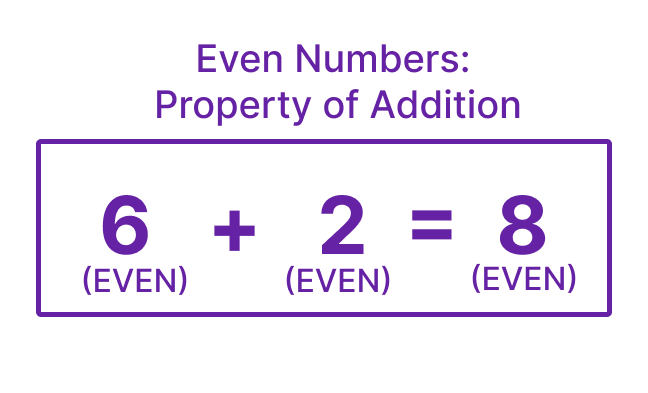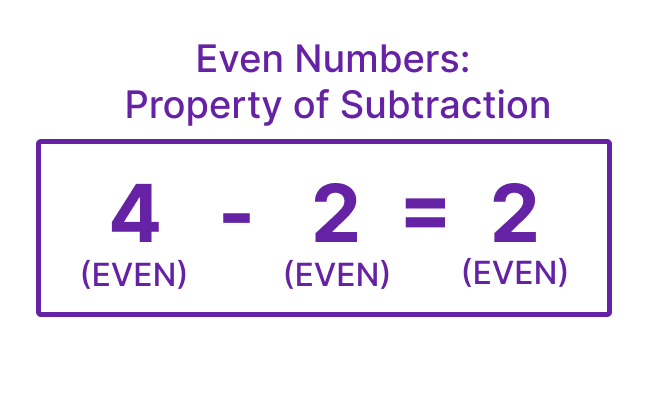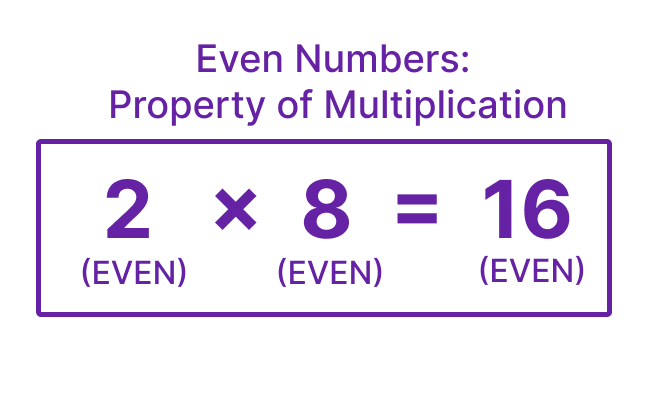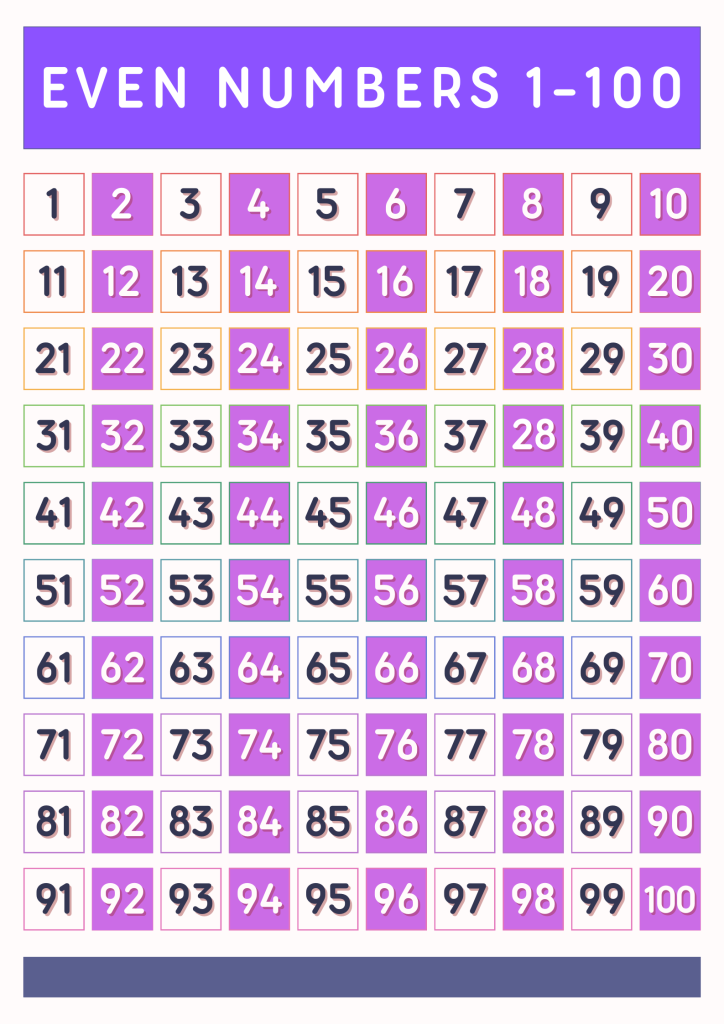Even Numbers – List of Even Numbers
Table of Contents
Introduction
Even Numbers
In the domain of mathematics, numbers are categorized into different groups based on their properties and characteristics. One of these categories is even numbers. But what exactly defines an even number, and how do they stand apart from other types of numbers, such as odd numbers? Let’s delve into the intriguing world of even numbers and uncover their distinctive properties.
Analogy of Definition
What are Even Numbers?
An even number is a whole number that is exactly divisible by 2, leaving no remainder. Even numbers are characterized by their divisibility by 2 and their distinct patterns in arithmetic operations.
Method
Properties of Even Numbers:
Even numbers possess several unique properties that set them apart from other types of numbers. These properties include the property of addition, the property of subtraction, and the property of multiplication.
Property of Addition
The property of addition states that the sum of two even numbers is always an even number. When you add two even numbers together, the result will always be another even number. For example, 2 + 4 = 6, 8 + 10 = 18, and so on.

Property of Subtraction
Similarly, the property of subtraction dictates that the difference between two even numbers is also an even number. When you subtract one even number from another, the result will always be another even number. For instance, 8 – 4 = 4, 12 – 6 = 6, and so forth.

Property of Multiplication
The property of multiplication emphasizes that the product of two even numbers is always an even number. When you multiply two even numbers together, the outcome will always be another even number. For instance, 2 x 4 = 8, 6 x 10 = 60, and so on.

List of Even Numbers from 1-100

Examples
Examples of Even Numbers:
1. Positive Even Numbers: 2, 4, 6, 8, 10, 12, 14, 16, 18, 20, …
2. Negative Even Numbers: -2, -4, -6, -8, -10, -12, -14, -16, -18, -20, …
3. Zero: 0 (Zero is considered an even number due to its divisibility by 2)
Quiz
Tips and Tricks
1.Identifying Even Numbers
Tip: Even numbers are integers that are divisible by 2 without leaving a remainder. In simpler terms, if a number can be divided evenly by 2, it’s an even number.
2.Ending Digits
Tip: Notice that even numbers always end in 0, 2, 4, 6, or 8. This pattern can help you quickly recognize even numbers without performing division.
3.Pairs and Grouping
Tip: Even numbers can be thought of as coming in pairs. For every even number, there is another even number one unit higher. For example, 4 and 6, 12 and 14, and so on.
4.Addition and Subtraction
Tip: When adding or subtracting even numbers, the result will always be even. For example, 2 + 4 = 6 (even) and 8 – 4 = 4 (even).
5. Multiplication
Tip: Multiplying even numbers always results in an even number. For instance, 2 × 4 = 8 (even) and 6 × 8 = 48 (even).
6.Doubling and Halving
Tip: Even numbers are easily recognizable because they can be doubled to get another even number. Conversely, dividing an even number by 2 results in another even number.
Real life application
Story: “The Even Number Expedition of Emma and Ethan”
Emma and Ethan, two young explorers, embarked on an expedition that led them to discover the practical applications of even numbers in real-life scenarios.
Scenario 1: The Synchronized Dance Routine
Emma and Ethan participated in a dance competition that required them to perform a synchronized routine. The choreographer instructed them to count their steps in even numbers to maintain perfect synchronization. By following the even counting pattern, they executed their routine flawlessly, impressing the judges and securing the top position.
Scenario 2: The Seating Arrangement Puzzle
During a family gathering, Emma and Ethan were tasked with arranging the chairs for the guests. They realized that to create balanced seating arrangements, they needed to pair the chairs in even numbers to ensure equal distribution. By applying the concept of even numbers, they successfully organized the seating layout, creating a harmonious environment for the event.
Scenario 3: The Musical Harmony Challenge
Emma and Ethan participated in a music competition that required them to play musical notes in a harmonious sequence. They discovered that by selecting even-numbered notes, they could create a melodious composition that resonated with the audience and earned them accolades for their musical prowess.
FAQ's
Like? Share it with your friends
